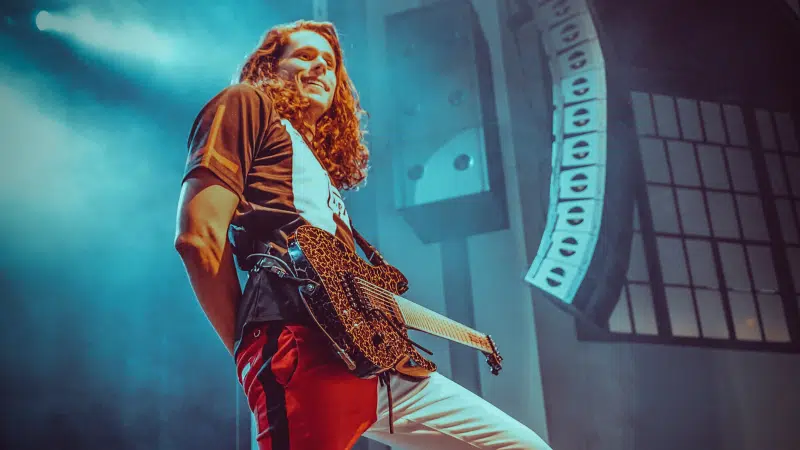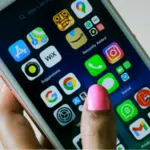Sadly, none of us have figured out how to grow trees that sprout fresh hundred-dollar bills, but luckily we can ask for help when it comes to funding our big ideas. Want to create an amazing sponsorship deck? You’ve come to the right place. If you’re looking to reach out for sponsors to assist you in your next tour, festival, or any cool event you’ve got in mind, here’s what you need in your deck.
What To Include In A Tour Sponsorship Deck
Before we dive in…
The biggest issue people face when presenting their sponsorship deck is not doing the proper research before creating the proposal. The key to a good deck is making sure to include exactly what that brand is looking for in a client. You need to anticipate what they want before they ask. They’ll be impressed by your preparation and see that you’re taking whatever it is you want seriously.
That said, please don’t send your possible sponsor a huge PowerPoint with 100 pages to read through. Established brands have a lot on their plate, and the last thing they want to do is read through pages and pages of info. Realistically, you shouldn’t be sending a literal PowerPoint presentation at all. You should turn your presentation into a PDF, or at least provide a link to its own website. It’s very important you present yourself and all you have to offer in the most professional way you can.
If you know what you’re talking about, look like it!
What Do YOU Have To Offer?
Consider this… What value do you truly have to offer? Whatever cool personal attributes and skills you’ve got to offer, capitalize on them! Show companies that you have a way to positively impact their brand. An important aspect of this is understanding what their marketing objectives are. Do they want to increase their revenue by x%? How can you help with that? Do they want to increase their brand awareness? Let them know how you can make that happen. Bring to the table things that can help them reach their goals (and yours).

Understanding your audience is key for sponsors to assess their return on investment. Try to include detailed demographic and psychographic insights about your fanbase, such as age, gender, location, and income levels, as well as their interests, values, and spending habits. For example, if your audience is predominantly millennials or GenZ passionate about sustainability and tech, that’s valuable information to share.
In addition, you should also showcase engagement metrics from previous tours or social media campaigns, like follower counts, post interactions, or ticket sales, to paint a clear picture of your reach and influence.
Stick To Your Branding
Your sponsorship deck should be a reflection of who you are as an artist or brand. Always include your logo, adhere to your brand’s theme, and maintain consistent visuals and tone throughout the deck. This means using the same colors, fonts, and design elements that represent your identity. Don’t forget to include your contact information and website on every key page, whether it’s at the header, footer, or a dedicated section, so sponsors can easily reach you. A clean, professional layout goes a long way in building trust and credibility.
In any representation of you, the pathway for communication needs to be crystal clear. Make it easy for sponsors to know exactly how to get in touch, and consider adding clickable links in your digital deck for direct access to your email or social media. Additionally, including testimonials or endorsements from past partners can add weight to your proposal. We all love some good collaboration, so make sure your deck highlights how you align with the sponsor’s goals and values.
The easier you make it for them to see the potential for synergy, the more likely you are to seal the deal!
Think About Basics
These foundational elements may seem straightforward, but they’re absolutely crucial for crafting a strong sponsorship deck. Placing these details at the beginning will ensure your vision is clear and easy to understand from the start. Make sure to include:
- A concise summary of your goals // What do you want? What are you doing? Why does it matter?
- Tour dates and locations // When and where is everything happening?
- Attendance expectations // How many people do you anticipate?
- Cost details // How much will it cost to attend?
- Target audience // Who are you trying to reach?
By addressing these points upfront, you’re setting the tone for the rest of your pitch and giving potential sponsors a clear understanding of your vision.
Consider Sustainability and CSR Alignment
With sustainability and corporate social responsibility (CSR) becoming central to many brands’ missions, aligning your tour with these values can be a big draw for sponsors. If this sounds good to you, try to highlight any green initiatives, like using eco-friendly merch, offsetting your carbon footprint, or reducing waste during the tour. Outline opportunities for the sponsor to participate, such as branding reusable water bottles or promoting their commitment to sustainability through your events.
By showing how your values align with theirs, you’ll position the sponsorship as more than a marketing opportunity. Now, it’s a chance to make a positive impact together. 💚
——
Feed your brain…
Quick Guide to Taxes as an Independent Musician
Best Websites To Sell Merch Online as a Musician
How To Market Your New Release On A $0 Budget
How to Optimize Your Advertising Spend as an Independent Artist
——
Why Should They Trust You?

If you’ve successfully executed similar events in the past, include photos, videos, and testimonials from attendees. Positive feedback is a powerful tool, and brands love to see proof of your success and how it can translate to value for their own brand. The more you can demonstrate your track record, the more confident they’ll feel about partnering with you.
Sponsorship Tiers: What Can Sponsors Expect From You?
Your sponsorship package should outline exactly what you’re offering in return for their support. Think of ways their brand can gain exposure, like well-placed signage at shows, shoutouts on social media, or even verbal endorsements during your performances. Perks like VIP seating, exclusive performances, or co-branded promo videos can also sweeten the deal.
To make it easier for sponsors to choose the right level of involvement, consider offering a breakdown of the different sponsorship tiers. Here’s an example of how you can break it down:
- Gold Sponsor ($X): This is your typical top-tier sponsorship, offering title sponsorship and prime placement across all your promotional materials. In exchange, the sponsor receives prominent logo placement on tour merchandise, signage at shows, and social media features across your platforms. (This package is perfect for a brand looking for maximum visibility.)
- Silver Sponsor ($Y): Mid-tier sponsors typically still get excellent branding opportunities, including social media mentions and logo placement on smaller assets like tour posters, programs, or digital ads. (This is an ideal option for a sponsor who wants exposure but at a more budget-friendly level.)
- Bronze Sponsor ($Z): For smaller-scale support, the Bronze package offers logo placement on tour merch, a mention in tour programs, and other more subtle promotional opportunities. (This one is more for brands looking to support the tour with a lower investment while still getting involved.)
Offering tiered sponsorship levels allows you to cater to a range of potential partners, and by providing a breakdown of what each tier offers, you make it easier for sponsors to see the value in each package.
Keep in mind that sponsorship opportunities aren’t limited to one brand. Different companies can sponsor various aspects of your tour, such as amps, guitars, mics, or other equipment you use. However, it’s essential to maintain some professionalism here by avoiding working with beefing companies. A strong, mutually beneficial relationship will keep sponsors coming back.
How Much Should You Ask For?
It’s not uncommon for first-time sponsors to offer $500 to a band. However, it’s up to you to prove your value and show why investing more in your tour will benefit their brand. Use data to back up your worth, like the size and dedication of your fanbase, social media engagement, and past success with other events or sponsors.
Don’t be afraid to negotiate! If you can demonstrate that their investment will drive meaningful results, like increased brand awareness or new customers. they’ll be more inclined to allocate a larger budget to support you. Know your value, communicate it clearly, and always aim to create a win-win partnership.
Confidence is Key
A great sponsorship deck can open many new doors for you as an artist, and having a sponsor secures not only a steady source of income to fund all your ideas but also a whole new breed of fans who may have never heard of you otherwise. The more insight you have into the mind of who you’re pitching to guarantees you a higher chance of being accepted.
This might seem like a lot, but believe in your capabilities as an artist! Work hard, and it’ll all pay off… literally.




One Comment
Comments are closed.